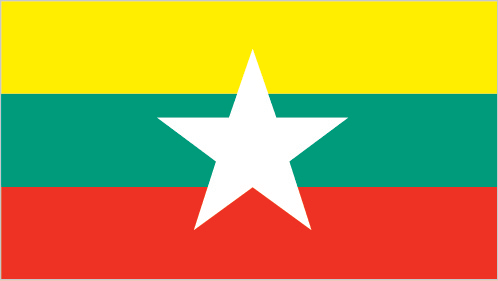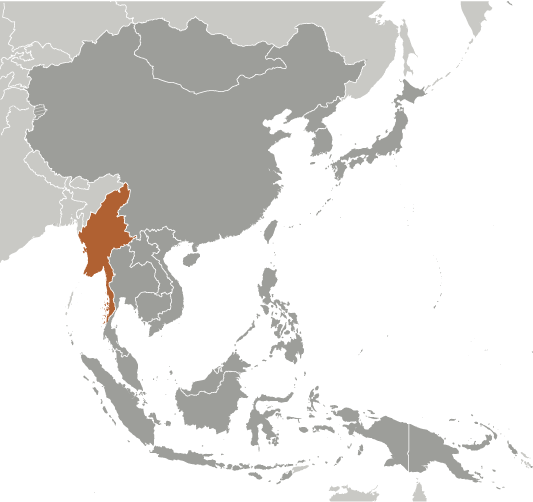|
Economy - overview:
|

|
|
Burma is a resource-rich country but still suffers from pervasive government controls, inefficient economic policies, corruption, and rural poverty. Burma is the poorest country in Southeast Asia; approximately 32% of the population lives in poverty. Corruption is prevalent and significant resources are concentrated in the extractive industries are concentrated in a few hands. The Burmese government has initiated notable economic reforms. In October 2011, 11 private banks were allowed to trade foreign currency. On April 2, 2012, Burma's multiple exchange rates were abolished and the Central Bank of Myanmar established a managed float of the Burmese kyat. In November 2012, President THEIN SEIN signed a new Foreign Investment Law. Despite these reforms, the Burmese government has not yet embarked on broad-based macro-economic reforms or addressed key impediments to economic development such as Burma's opaque revenue collection system. Key benchmarks of economic progress would include steps to ensure the independence of the Central Bank, provide budget allocation for social services, and enact laws to protect intellectual and real property. In recent years, foreign investors have shied away from nearly every sector except for natural gas, power generation, timber, and mining. The exploitation of natural resources does not benefit the population at large. The most productive sectors will continue to be in extractive industries - especially oil and gas, mining, and timber - with the latter two causing significant environmental degradation. Other areas, such as manufacturing, tourism, and services, struggle in the face of poor infrastructure, unpredictable trade policies, undeveloped human resources (the result of neglected health and education systems), endemic corruption, and inadequate access to capital for investment. The US initially imposed sanctions on Burma in response to the 1988 military crackdown and the regime's refusal to honor the democratic opposition National League for Democray's 1990 landslide election victory under the leadership of AUNG SAN SUU KYI. In 2003, the US moved from broad-based to more targeted sanctions. In July 2012, as a result of reforms undertaken by President THEIN SEIN and his nominally civilian government, the US broadly eased restrictions on new investment in and the export of financial services to Burma. In November 2012, the US eased the import bank on Burmese products to the US with the exception of jadeite and rubies. Although the Burmese government has good economic relations with its neighbors, significant improvements in economic governance, the business climate, and the political situation are needed to promote serious foreign investment.
|
|
|
GDP (purchasing power parity):
|

|
|
$89.23 billion (2012 est.)
country comparison to the world: 77
$84.02 billion (2011 est.)
$79.67 billion (2010 est.)
note:
data are in 2012 US dollars
|
|
|
GDP (official exchange rate):
|

|
|
$54.05 billion (2012 est.)
|
|
|
GDP - real growth rate:
|

|
|
6.2% (2012 est.)
country comparison to the world: 39
5.5% (2011 est.)
5.3% (2010 est.)
|
|
|
GDP - per capita (PPP):
|

|
|
$1,400 (2012 est.)
country comparison to the world: 205
$1,300 (2011 est.)
$1,300 (2010 est.)
note:
data are in 2012 US dollars
|
|
|
GDP - composition by sector:
|

|
|
agriculture: 38.8%
industry:
19.3%
services:
41.8% (2012 est.)
|
|
|
Labor force:
|

|
|
33.41 million (2012 est.)
country comparison to the world: 19
|
|
|
Labor force - by occupation:
|

|
|
agriculture: 70%
industry:
7%
services:
23% (2001)
|
|
|
Unemployment rate:
|

|
|
5.4% (2012 est.)
country comparison to the world: 50
5.5% (2011 est.)
|
|
|
Population below poverty line:
|

|
|
32.7% (2007 est.)
|
|
|
Household income or consumption by percentage share:
|

|
|
lowest 10%: 2.8%
highest 10%:
32.4% (1998)
|
|
|
Investment (gross fixed):
|

|
|
16.3% of GDP (2012 est.)
country comparison to the world: 130
|
|
|
Budget:
|

|
|
revenues: $2.234 billion
expenditures:
$4.414 billion (2012 est.)
|
|
|
Taxes and other revenues:
|

|
|
4.1% of GDP (2012 est.)
country comparison to the world: 215
|
|
|
Budget surplus (+) or deficit (-):
|

|
|
-4% of GDP (2012 est.)
country comparison to the world: 137
|
|
|
Inflation rate (consumer prices):
|

|
|
3.1% (2012 est.)
country comparison to the world: 81
5% (2011 est.)
|
|
|
Central bank discount rate:
|

|
|
9.95% (31 December 2010 est.)
country comparison to the world: 16
12% (31 December 2009 est.)
|
|
|
Commercial bank prime lending rate:
|

|
|
13% (31 December 2012 est.)
country comparison to the world: 32
16.33% (31 December 2011 est.)
|
|
|
Stock of narrow money:
|

|
|
$9.965 billion (31 December 2012 est.)
country comparison to the world: 77
$8.652 billion (31 December 2011 est.)
|
|
|
Stock of domestic credit:
|

|
|
$15.66 billion (31 December 2011 est.)
country comparison to the world: 89
$11.83 billion (31 December 2010 est.)
|
|
|
Market value of publicly traded shares:
|

|
|
$NA
|
|
|
Agriculture - products:
|

|
|
rice, pulses, beans, sesame, groundnuts, sugarcane; fish and fish products; hardwood
|
|
|
Industries:
|

|
|
agricultural processing; wood and wood products; copper, tin, tungsten, iron; cement, construction materials; pharmaceuticals; fertilizer; oil and natural gas; garments, jade and gems
|
|
|
Industrial production growth rate:
|

|
|
4.3% (2010 est.)
country comparison to the world: 69
|
|
|
Current account balance:
|

|
|
-$891.2 million (2012 est.)
country comparison to the world: 108
$96.1 million (2011 est.)
|
|
|
Exports:
|

|
|
$8.529 billion (2012 est.)
country comparison to the world: 98
$8.196 billion (2011 est.)
note:
official export figures are grossly underestimated due to the value of timber, gems, narcotics, rice, and other products smuggled to Thailand, China, and Bangladesh
|
|
|
Exports - commodities:
|

|
|
natural gas, wood products, pulses, beans, fish, rice, clothing, jade and gems
|
|
|
Exports - partners:
|

|
|
Thailand 36.7%, China 18.8%, India 14.1%, Japan 6.6% (2011)
|
|
|
Imports:
|

|
|
$7.137 billion (2012 est.)
country comparison to the world: 111
$5.982 billion (2011 est.)
note:
import figures are grossly underestimated due to the value of consumer goods, diesel fuel, and other products smuggled in from Thailand, China, Malaysia, and India
|
|
|
Imports - commodities:
|

|
|
fabric, petroleum products, fertilizer, plastics, machinery, transport equipment; cement, construction materials, crude oil; food products, edible oil
|
|
|
Imports - partners:
|

|
|
China 38.8%, Thailand 22.6%, Singapore 9.7%, South Korea 5.4%, Malaysia 4.5%, Japan 4.1% (2011)
|
|
|
Reserves of foreign exchange and gold:
|

|
|
$4.107 billion (31 December 2012 est.)
country comparison to the world: 98
$3.931 billion (31 December 2011 est.)
|
|
|
Debt - external:
|

|
|
$5.448 billion (31 December 2012 est.)
country comparison to the world: 109
$5.804 billion (31 December 2011 est.)
|
|
|
Exchange rates:
|

|
|
kyats (MMK) per US dollar -
867.6 (2012 est.)
815 (2011 est.)
5.58 (2010 est.)
1,055 (2009)
1,205 (2008)
|
|
|
Fiscal year:
|

|
|
1 April - 31 March
|
|
|
|





 )
)



